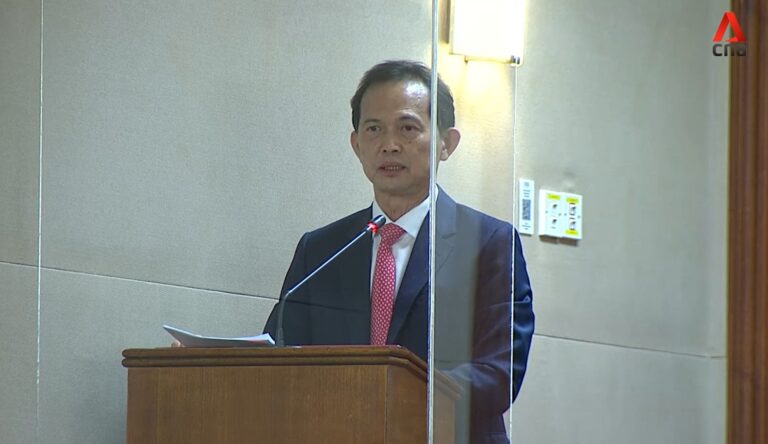Leong Mun Wai’s Speech on 14 Oct 2020 in response to the Ministerial Statement on Progress in Combating Covid-19 on 5 Oct 2020
Mr Speaker, I would like to thank the DPM and Minister of Finance for his Ministerial Statement which sets the tone for our eventual emergence from the Covid-19 crisis. I fully support the efforts. However, there are some concerns and clarifications that need to be voiced and addressed.
At this unusual time, it is crucial that our population has unshakeable faith in the Government to lead them. However, the Government does not inspire confidence by hastily increasing taxes and fees while at the same time pledging Covid-19 support measures. Our populace could view this act as ‘giving with one hand and taking with the other.’ Let me give you some examples that give rise to such sentiment.
Baffling Tax and Fee Hikes
Firstly, the MediShield Life Premium increase of between 11.5% to 35.4% to be effective in the ‘early 2021’ was announced on the 29th September. That means an insured person who used to be paying $1,000 annual premium will now have to pay $1,354 a year.
While this change is under public consultation until end of October, the MediShield Life Fund already has $8.3B of total assets and appears to be fiscally healthy and continues to accumulate large surpluses of about $0.9B every year. Also the new actuarial assumptions behind the projected future liabilities have not been disclosed. Such information is fundamental in determining the fiscal health of the scheme and justifying any increase in premiums.
The increase in coverage which accompanies this premium hike is scant comfort to Singaporeans who are still struggling with the financial woes of Covid-19. In any case, there is also no information on how much this increased coverage would have cost the MediShield Life scheme if it had been implemented in earlier years.
Secondly, the 9.3% electricity tariff hike for the Oct-Dec quarter of 2020 was announced by Singapore Power (the SP Group) on the 30th September. This is already approved by the Energy Market Authority. Here is a power-grid monopolist which does not generate electricity, but made billions of dollars since the liberalization of the electricity market in 2012, sparing no time in raising prices at the first available opportunity, even as Singaporeans struggle under the Covid-19 crisis. While the increase is for paying a higher price to the power generating companies (the gencos), SP Group could have easily absorbed the increase from the past profits it has earned instead of passing the increased cost on to consumers.
Thirdly, on the 9th October, the Land Transport Authority (LTA) announced that the ERP at six gantries along the CTE would be increased by $1 from the 12th Oct to ease congestion during peak periods.
While ERP charges at some gantries along the CTE have been reintroduced in July and August following the end of the circuit breaker, it is hard to imagine that congestion has
already built up to the pre-Covid level.
These untimely announcements were made consecutively in a short period of two weeks, adding hundreds of dollars more to household expenditures during these austere times when every cent counts to the average Singaporean.
These policies only act as a catalyst to heighten the already increasing public apprehension of more tax and fee hikes coming their way, giving rise to concerns such as whether the GST will be increased soon after 2021 given that $6B is still parked under the GST Voucher Fund, although the Government needs to drawdown from the Reserves. When in fact, announcing the shelving of the GST increase indefinitely could be a much-needed boost to the ailing consumer sector and remove another potential uncertainty on Singaporeans. We could also make better use of the $6B parked under the GST Voucher Fund.
This begs the question of the timing of these tax and fee hikes when the support measures are being phased out. Can these hikes not be shelved till later? Can SP Group not absorb the tariff increases with their past profits? Can’t ERP increases wait? Can’t premium increases be deferred for a period of one to two years, as the current insurance claims are still way below the collected premiums after all?
Are Our Coffers Healthy?
The man on the street must be baffled by the seemingly contradictory actions of the Government. On the one hand, it is purported that the Government is putting up $100B to help with the Covid support measures, yet on the other hand, the implementation of the tax and fee hikes.
Is the country so overstretched financially that we have to replenish our coffers with those hikes and in such haste?
This leads to the 3 key questions often asked by Singaporeans regarding the $100B of support measures.
1. How is the $100B spent?
2. How is the $100B paid for?
3. How much reserves are left after paying the $100B?
Although the Government has given most of the relevant information in Parliament Answers, Ministerial Statements and published Financial Statements, these questions need to be answered in a more precise and simplified manner so that the layperson can comprehend. I have attempted to do this below and I would welcome the DPM to correct me should I be inaccurate in my humble attempt to address those 3 queries.
Firstly, the $100B spending is approximately broken down into the following categories (rounded up to the nearest billion):
– $37B of financial transfers to Singaporeans, PRs and local companies.
– $12B of tax and public fee rebates.
– $29B of increased expenditure to fight Covid-19.
– $22B of loan guarantees.
Of the $37B of financial transfers, $23B is paid to local companies through the Job Support Scheme to preserve jobs for Singaporeans and PRs. $7B is paid directly to Singaporeans in the form of Care and Support Package, Solidarity Payment, Self-Employed Income Relief, Singapore Rediscover Vouchers and others.
Of the $12B of tax and public fee rebates, $2.5B is in the form of rental relief for SMEs and $0.9B of Workers’ Levy Waiver. Drop in GST and betting taxes accounted for about $4B.
The $29B spent on fighting Covid-19 includes spending on the upgrading of testing facilities, providing new housing facilities to the Foreign Workers, funding projects like the $2B allocated to the ‘SG Together’ initiative, the $2B to the SGUnited Jobs and Skills Programme, and the $1B to the Job Growth Initiative.
The $22B of loan guarantees are for the Government to provide guarantee of up to 90% of loan principal for various forms of credit given by the commercial banks to the SMEs. Hence this is not an immediate expenditure as the loans are provided for by the banks.
Secondly, the $100B support measures are paid for by:
– $18B of accumulated fiscal surpluses of the previous term of Government.
– $52B of drawdown from the Reserves.
– $8B of reduced current expenditure for FY2020.
– $22B in loan capital.
According to the DPM’s reply to Honourable Member Leon Perera in June this year, the $22B in loan capital is expected to be repaid in the future and is hence fiscally neutral which means that there is no use of funds.
Thirdly, while the Government does not want to disclose the National Reserves for security reasons, it has nonetheless published detailed annual financial information on our national assets and liabilities. In its latest Government Financial Statements as at end March 2020, it was reported that we own a total of $1.35T in financial assets. And $1.35T is $1,350B!
At the same time, according to the latest Revised Fiscal Position for FY2020 published on 5th October, the Net Investment Return Contribution is $18.6B. Given that the Net Investment Return Contribution is 50% of the Net Investment Return, the Net Investment Return for 2020 is $37.2B.
Accordingly, the net decrease of the total financial assets for FY2020 will be the $52B drawdown minus the $37.2B Net Investment Return which gives us $14.8B. This is still a very sizeable sum but it is not $52B or $100B. This $14.8B represents only a 1.1% decrease in our total financial assets.
The conclusion from all these is that we have depleted only 1.1% of our total financial assets to fight the Covid-19 in 2020. We have to commend the Government for its shrewd financial management skills. And at the same time, Singaporeans can rest assured that our national finances remain intact and we are far from squandering away our past savings .
It appears that there is no need for the tax and fee hikes to take place so soon. We should let Singaporean households recover from the aftershocks of the pandemic and find their footing before we send them reeling with more financial burdens.
Grooming the Resilient Singaporean
The finances of many Singaporeans have been severely affected by Covid-19 and the Government must support Singaporeans as they work to recoup their financial losses.
It is the most opportune time to focus on grooming the ‘Resilient Singaporean’ and not just ‘economic resilience’. Economic resilience belongs to the government-led economic development model which has become ineffective in this technologically disruptive, and pandemic-prone times. Now, we want each ‘Resilient Singaporean’ to become an independent decision-making unit, which collectively will make Singapore a stronger economy and society.
And the first step to grooming the Resilient Singaporean is to re-examine our overall safety net policies like the CPF, MediShield Life, CareShield, HDB lease and so on which will go a long way to increase the confidence of Singaporeans and re-boost their energy to rise to the challenge to rebuild our economy and society.
The crucial economic inputs in this new era are creativity, innovation and entrepreneurship and not land, capital and cheap labour anymore. We also have to understand that civil servants are not the best persons to decide which entrepreneur to help or which industry to promote. We need the Resilient Singaporeans to make those crucial decisions on their own.
The Government’s role should be restricted to being a facilitator and custodian of our funds, but the actual work of building our future economy should be left to entrepreneurs and experts in different fields from the private sector. Intrinsic motivation with a buy-in by our citizens will go much further and lasts longer than extrinsic instruction from the Government.
Recently, both the Prime Minister and Leader of Opposition have commented on inter-generational equity. My humble opinion is that before we talk about equity, we must not forget that the next generation can do well only if this generation does well. If we do
badly now, the next generation will not be able to hold on to whatever financial assets we leave behind for them.
And now there is a grave danger that this generation may not do as well as the previous one if we leave things the way they are. We have to move away from the ‘one-size-fits-all’ attitude, and adopt a more dynamic mindset that moves with the times.
In conclusion, I would like to reiterate that going forward, no strategy will be effective if Singaporeans are not convinced by the facts and figures. It is my belief that they will not be ready to participate in any governmental endeavours whole-heartedly. And we have to strengthen our social safety net before we can convince and attract Singaporeans to take up the entrepreneurial challenge. This is an opportune time to rethink and to re-calibrate, as we move forward post-Covid.
I hope the information and ideas I have shared can help Singaporeans understand our current situation better, and in turn help the Government to achieve a better outcome from the strategies announced by the DPM.
The Progress Singapore Party intends to continually bring up ideas for discussion in this Parliament.
Mr Speaker, notwithstanding the reservations I have, I support the Ministerial Statement.
You can watch the Video for this speech here.
Credit: CNA (14 Oct 2020)

